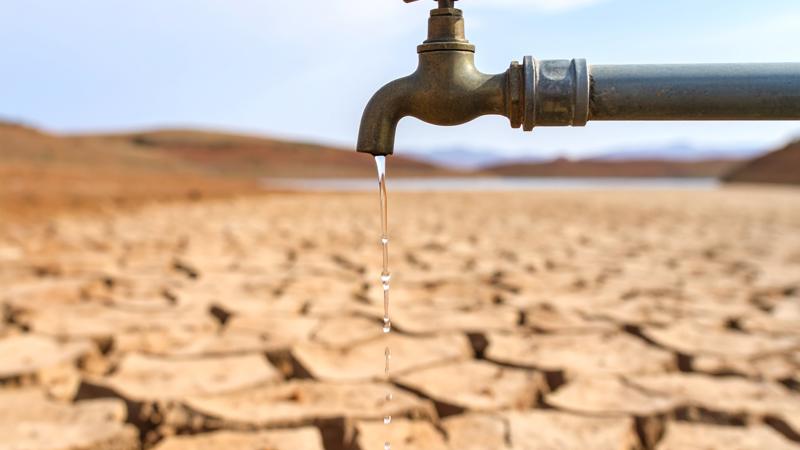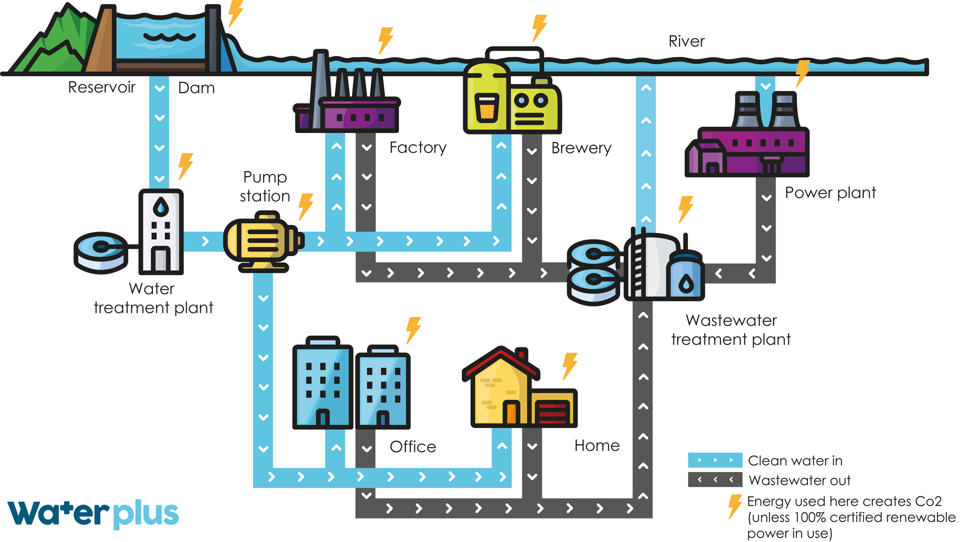Net Zero and Water Scarcity: Turning evolving challenges into opportunities
With the increased costs seen by businesses and the public sector, there’s never been a better time to look at how small water actions can drive wider benefits and improve budgeting, cut carbon and reduce risks to operations.
In fact, smarter water strategies can unlock areas for significant savings as well as help towards Net Zero and nearer-term sustainability targets.
And small changes can help meet evolving business challenges, particularly after wholesaler price increases for water hit businesses and the public sector from April 2025. Here's the three essential areas to explore for solutions - and how substantial cost and carbon reductions are being seen by a host of customers taking smarter actions with Water Plus.

Action has seen more than 3,600 businesses and public sector sites saving money and using less water in 2025, after the proactive engagement approach by 2025 UK Customer Satisfaction Award winner and national business water retailer Water Plus.*
Little steps with water can also improve competitiveness, keeping businesses relevant in supply chains now and for the future.
Scott MacIndeor,Head of Advanced Services at Water Plus, shares the latest insight and know-how on the approaches with water that can be a game-changer and push forward Net Zero progress in the UK.

1. Navigating Net Zero: How water approaches can help
There are carbon emissions linked to all water used by UK businesses and other sites and free and low-cost activities can drive these down, helping Scope 3 – with opportunities to reduce energy costs and cut use too.
Noting meter readings regularly, at least once a month – if you’re not already tracking this – and providing the reads to your water retailer, is an easy action to take which helps reduce bills based on estimated use.
This helps cost control and forecasting and can be done as part of other regular maintenance checks, if the meter is safe to access.
It can also help identify areas where water waste is happening, including leaks which can quickly add onto costs and restrict decarbonisation progress in operations. And if you have a single meter read, or multiple meter readings from sites, these can be uploaded in seconds on the MyAccount portal that Water Plus customers can access.
Another way to reduce overall use and carbon emissions is introducing small, low-cost water efficiency devices.
At one of a multi-site’s locations in 2025 these have delivered a 42.5% water saving and reduced hot water use, which means an energy saving too.**
It means an estimated £13.4k saving in wholesaler charges from estimated reduced water use across 12 months, from the devices installed through Water Plus. Wholesaler costs make up 90%, on average, of business and public sector water bills, which is why looking at how to drive down that part of the bill is important.
Using heated water multiple times is another approach to reduce water consumption and cost. While a bigger initial cost may be involved, the reduction in other costs and increased efficiencies can quickly give a return on investment.

2. Better water data and analysis can help locate extra savings
Manufacturers and other multi-sites, including the public sector, are adding data loggers onto water meters in 2025 to gain more detail on daily water use.
These are sometimes referred to as AMR, are attached to water meters and can feed information into an online analysis portal. The loggers can save time, by removing the manual walkaround checks. They can also help with meters that are not safe to take readings from due to access limitations.
And a data logger spotted a 800 litres an hour water saving could be achieved at a site in 2025. The increased use was in the middle of the night and the logger’s detailed data and proactive alert from the Water Plus team, saw a water loss stopped quickly, preventing further cost increases.
A leak on a water pipe at a site could cause water to stop flowing, which would have further reaching impacts for organisations and those that use water in their products, services and across sites.
Another data logger showed 1,900 litres an hour additional water use that was stopped following a site visit in April 2025, which located an underground pipe leak. It’s a £48k estimated saving, in 12-month wholesaler costs, showing the significant cost impacts for businesses.
Enhanced and improved reporting around water consumption is allowing greater data analysis opportunities – with a £21k saving on water costs identified in a 200-site review, in 2025, by a Key Account Manager at Water Plus. It's amongst the ongoing actions to support customers and to help organisations and sites boost efficiencies.

3. Futureproofing: Improving risk resilience
There are risks of a 6 billion litres of water a day shortfall by 2055, for household water supply and the wider economy, without actions by businesses and each of us.*** So, the cost, risks and environmental benefits of taking action now are even clearer.
Monitoring for areas of additional water use and encouraging staff to report leaks to main contacts at your business, all helps quicker reactions and reduces risks for businesses and the public sector.
Encouraging employees to suggest ways to save water and improve efficiency around how it’s used can also be great catalyst for positive change and innovation.
Having an up to date emergency water plan, so you know where to get water if supplies stopped suddenly, is also an important step to take to protect your operation and so staff know what to do in this scenario.
And there are a range of other changes that can help sites.
From rainwater harvesting, which has become easier to retro-fit due to modular units, to looking at ways to increase sustainable drainage solutions and systems at sites (known as SuDs), there are a number of different steps that can bring down carbon emissions and reduce wholesaler charges.
Reducing tap use can cut thousands of pounds off running costs – as well as reducing demand on water networks, to help keep supplies flowing for everyone.
And payback times for investment can be shorter too, particularly since wholesaler price increases for water in April 2025.

Water Plus, the largest water retailer for businesses in the UK, provides a comprehensive range of services for more than 700,000 customer supply points across Scotland and in England.
It’s driving efficiencies and enhancements for customers in 2025, as the company welcome new and returning customers – while more of its teams gain National Qualifications in Customer Service, as part of its customer-centric approach.
And Key Account Managers at Water Plus regularly visit customers, from multi-sites, to large industrial sector sites, to review how they’re using water and help them implement bespoke water management and contingency plans, for if water supply was to stop suddenly at a site, alongside showing them how to boost trade effluent efficiencies. They’ve also joined sustainability days to help public sector sites drive forward progress on water-savings.
Our team are always happy to see how we can help customers as a water retailer – and to check you are on the best prices.
To partner with the multi award-winning team at Water Plus, for your business water retail services, email: hello@water-plus.co.uk .
The Water Plus Advanced Services team can help your organisation zero in on cost and carbon reductions, to help deliver results for businesses, the public sector – and the planet too.
So, for technical water services including process audits, water audits and water efficiency installations and additional water tracking technology, contact: advancedservices@water-plus.co.uk .
Notations:
* More than 3,600 saved water after leaks were located and stopped and water-saving devices were installed between July 2024 and March 2025.
** 42.5% water saving, on average daily use, tracked by a data logger on a water meter in March 2025.
*** UK Government information published June 2025 estimated a 5 billion litres a day shortfall by 2055 for household water supply – and a further 1 billion litres a day deficit for the wider economy – without continued action.
